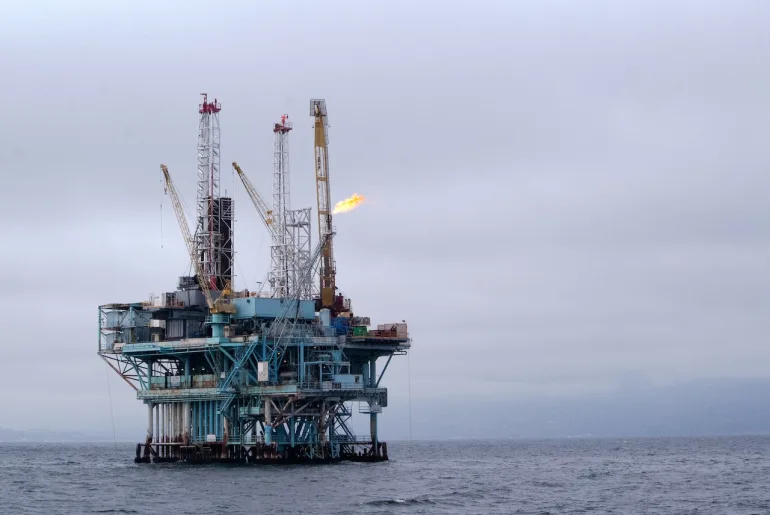Well Integrity Cased Hole Logging & Reservoir Monitoring Overview
In the Well Integrity Cased Hole Logging and Reservoir Monitoring training course, you will be introduced to the fundamental concepts of rock physics properties and the petrophysical parameters essential for interpreting cased hole logging data. You will also learn about the open hole logging tools used to obtain these parameters and your corresponding output data, which is crucial for interpreting cased hole logging results. The course will cover the interpretation of quick look well logs using these petrophysical parameters to evaluate reservoir quality.
You will further explore the basic principles and interpretation techniques of cased hole logging tools. You will learn how to utilize the output data for reservoir monitoring purposes and apply these reservoir monitoring principles to real-world field applications. Additionally, the training will delve into the topic of well-completion, specifically focusing on the perforation system and its correlation with results obtained from CBL/VDL, TDT/RST, RFT/MDT, and PLT logs.
Furthermore, you will gain insights into cementing or remedial cementing works, utilizing CBL/VDL results that are directly associated with petrophysics and reservoir monitoring.
By the end of the course, you will have a comprehensive understanding of the rock physics properties, petrophysical parameters, and the practical application of cased hole logging tools for reservoir evaluation, monitoring, well completion, and cementing operations.
Cased Hole Logging & Reservoir Monitoring: Well Integrity Objective
The main objective of the training course is to provide you with a comprehensive understanding of well integrity, cased hole logging, and reservoir monitoring techniques. The course aims to equip you with the knowledge and skills necessary to effectively evaluate and ensure the integrity of oil and gas wells. Read on for the complete objectives of PetroSync’s Well Integrity Cased Hole Logging and Reservoir Monitoring training course.
- You will receive an introduction to rock physics properties and the petrophysical parameters essential for interpreting cased hole logging data.
- You will become familiar with the quick look interpretation of well logs using petrophysical parameters to evaluate reservoir quality.
- Understanding the fundamental principles and interpretation of open and cased hole logging tools, you will apply reservoir monitoring techniques in field applications.
- You will gain knowledge in evaluating casing and cement quality to ensure effective reservoir isolation.
- Additionally, you will acquire advanced knowledge of single and multiphase flows, enabling analysis of potential flow or injection scenarios in reservoirs, as well as identification and remediation of flow abnormalities in the wellbore.
- Reservoir formation evaluation will be performed using cased hole logging tools when open hole tools are not available.
- You will be introduced to well-completion related to the perforation system, utilizing CBL/VDL, TDT/RST, RFT/MDT, and PLT log results, which are integral to petrophysical evaluation and reservoir monitoring.
What Is Well Integrity Cased Hole Logging and Reservoir Monitoring Training Course Outline?
The outline regarding PetroSync’s Well Integrity Cased Hole Logging and Reservoir Monitoring training course is listed down below. For a more detailed and complete outline, you can refer to PetroSync’s Well Integrity Cased Hole Logging and Reservoir Monitoring training course brochure.
Day 1
- Introduction to rock physics properties and the petrophysical parameters (Porosity, Permeability and permeability/porosity relationships, the volume of shale, and fluid saturations) needed for the cased hole logging interpretation.
- Introduction to the logging tools will be used to obtain the petrophysical parameters.
- Introduction to Lithology, Porosity, and Resistivity tools.
Case study: Introducing the different types of porosities and the effect of shale volume on porosity, permeability, and fluid saturations.
Exercise: Permeability / Porosity Relationships
Day 2
- Principles and interpretation of the open-hole logging tools which can be run in cased holes and the open-hole Logging data needed for Cased Hole Logging:
- Open-Hole Logging tools: Definitions, Measurements, Applications, Equations
- Lithology tools: Gamma Ray (GR) & Spectral Gamma Ray (NGT)
- Porosity tools: Sonic and Neutron.
- Resistivity tools.
- Quick Look Well Log Interpretation:
- Lithology Interpretation,
- Porosity, Vsh, and Rw Calculations,
- Water Saturation and Permeability Determination
Case study: How to calculate the petrophysical parameters from the open-hole logging tools
Exercise: To calculate the fluid saturation using these petrophysical parameters
Day 3
- Principles and interpretation of the other open hole logging tools which can be run in case holes:
- Repeat Formation Tester (RFT) tool
- Modular Formation Dynamics Tester (MDT) For:
- Determine static reservoir pressure
- Locate formation fluid contacts
- Verify reservoir isolation.
- Indicate reservoir depletion.
- Calculate reservoir permeability.
Case study: Using the RFT / MDT log example to determine reservoir pressure, reservoir permeability, formation fluid contacts and verify reservoir isolation. Using these logs in field wide for reservoir depletion and reservoir monitoring.
Exercise: To differentiate between the different gradients of different types of fluids; Gas, Oil, and water. To locate the different types of contacts Gas / Oil and Oil / Water contacts. Indicate the reservoir depletion from a field study.
- RFT & MDT Log Examples
- Principles and interpretation of cased hole logging tools which can be run in open holes:
- Thermal Decay Time tool (TDT)
- Reservoir Saturation tool (RST) For:
- Monitoring Fluid Contacts
- Reservoir monitoring.
Case study: Using the TDT / RST log example to determine the formation water saturation in a cased-hole. To follow up the fluid contacts raised by production in a time-lapse technique. Using these tools at different times for reservoir monitoring.
Exercise: To calculate the formation of water saturation (Sw) from TDT log example using open-hole logging data as porosity and volume of shale
Day 4
- Cased-Hole Logging Tools
- Definitions, Measurements, Applications, Equations,
- Definitions, Measurements, Applications, Equations,
- Principles and interpretation of Cement Bond (CBL) & Variable Density (VDL) tool for reservoir monitoring.
- Applications to field development
- Cement Bond (CBL) & Variable Density (VDL) log details:
- Principle of Operation
- Basic Sonic Theory
- Cement Bond Log (CBL)
- Variable Density Log (VDL)
- Quantitative Interpretation of CBL and Qualitative Interpretation of VDL using: CBL – VDL Log Example. For:
- Evaluate zone-to-zone isolation:
- Cement coverage of casing for corrosion protection, mechanical strength
- Identify cement top
- Evaluate cement repair jobs
- The Rig Cementing and Remedial cementing works using CBL /VDL results related to Petrophysics and
- Reservoir Monitoring.
- Well-completion related to perforation intervals according to CBL / VDL results
Case study: Using the CBL / VDL log example to evaluate zone-to-zone isolation, determine the good and poor cement bonds, identify cement tops, and evaluate the quality of cement. The decision for Rig cementing and Remedial cement jobs according to cement quality. Then, well completion related to perforation intervals, Petrophysics and Reservoir Monitoring.
Exercise: To determine the good and poor cement bonds. To locate the perforation intervals and top of cement by using the CBL /VDL log example.
- Production logging (PLT) log:
- Principles and interpretation of production logging tools (PLT):
- Applications to field development.
- Production logging (PLT) log includes
- Fullbore – Spinner, continuous, or packer Flowmeters.
- Gradiomanometer.
- Manometer.
- Thermometer
- Caliper & Radioactive Tracer. For:
- Fullbore – Spinner, continuous, or packer Flowmeters.
- Gradiomanometer.
- Manometer.
- Thermometer
- Caliper & Radioactive Tracer
Case study: Using the PLT log example to evaluate which perforations are plugged and which are producing or accepting. Monitoring of reservoir production. Evaluation of reservoir production or injection efficiency. Essential guidance for Remedial and Workover jobs
Exercise: To determine which perforations are plugged and which are producing or accepting and the percentage of production or injection for each perforation using the PLT log example
Day 5
- Applications to field development
- Case study 1: Including Carbonate and Clastic Reservoirs with different types of Hydrocarbons.
- Case study 2: Unconventional Reservoir Example from different areas in the World:
- Low Resistivity in Shaly Sand (in Egypt)
- Case study 3: Unconventional Reservoir Examples with Different Types of Hydrocarbons (Oil and Gas) from different areas in the world:
- Low Resistivity in Silt Reservoir. (In South Africa)
- Case study 4: Rock Typing in Carbonate Reservoir using Core Data with the Computer Processing Data.
Examples with different contacts (OWC, GWC, and Gas / Oil / Water contacts)
- Case study 5: Reservoir Petrophysical Modeling for Carbonate and Clastics reservoirs with different Hydrocarbons (Oil and Gas) from different areas (Gulf Arab countries and Egypt). Using New Approaches and Modern Techniques.
Exercise:
- Practical Training Examples:
- Using Raw Log Data for Quick Look Interpretation and Formation Evaluation
Who Should Attend Well Integrity Cased Hole Logging and Reservoir Monitoring Training Course?
The training course will specifically benefit but not limited to:
- Petroleum Engineers, Production, and Reservoir Engineers
- Field Operations and supervisors
- Geoscientists involved in field development
- Well Logging Analysts and Petrophysicists
PetroSync’s Well Integrity Cased Hole Logging and Reservoir Monitoring training course equip you with the understanding of techniques and tools used in cased hole logging and reservoir monitoring. By joining our training course, you can effectively evaluate the integrity of well casings and cement, as well as monitor reservoir characteristics. This knowledge is crucial for ensuring efficiency while keeping the optimal performance of oil and gas wells.
You can also learn about how to analyze and interpret the information obtained, enabling them to make informed decisions and take appropriate actions to maintain well integrity and optimize reservoir performance. Further, our training course provides you with insights into industry best practices and the latest advancements in wellbore evaluation. Join the Well Integrity Cased Hole Logging and Reservoir Monitoring training course and stay up-to-date with the latest techniques and technologies in the oil and gas industry with PetroSync!

SEO specialist by day, fact-checker by night. An avid reader and content writer dedicated to delivering accurate and engaging articles through research and credible sources.







